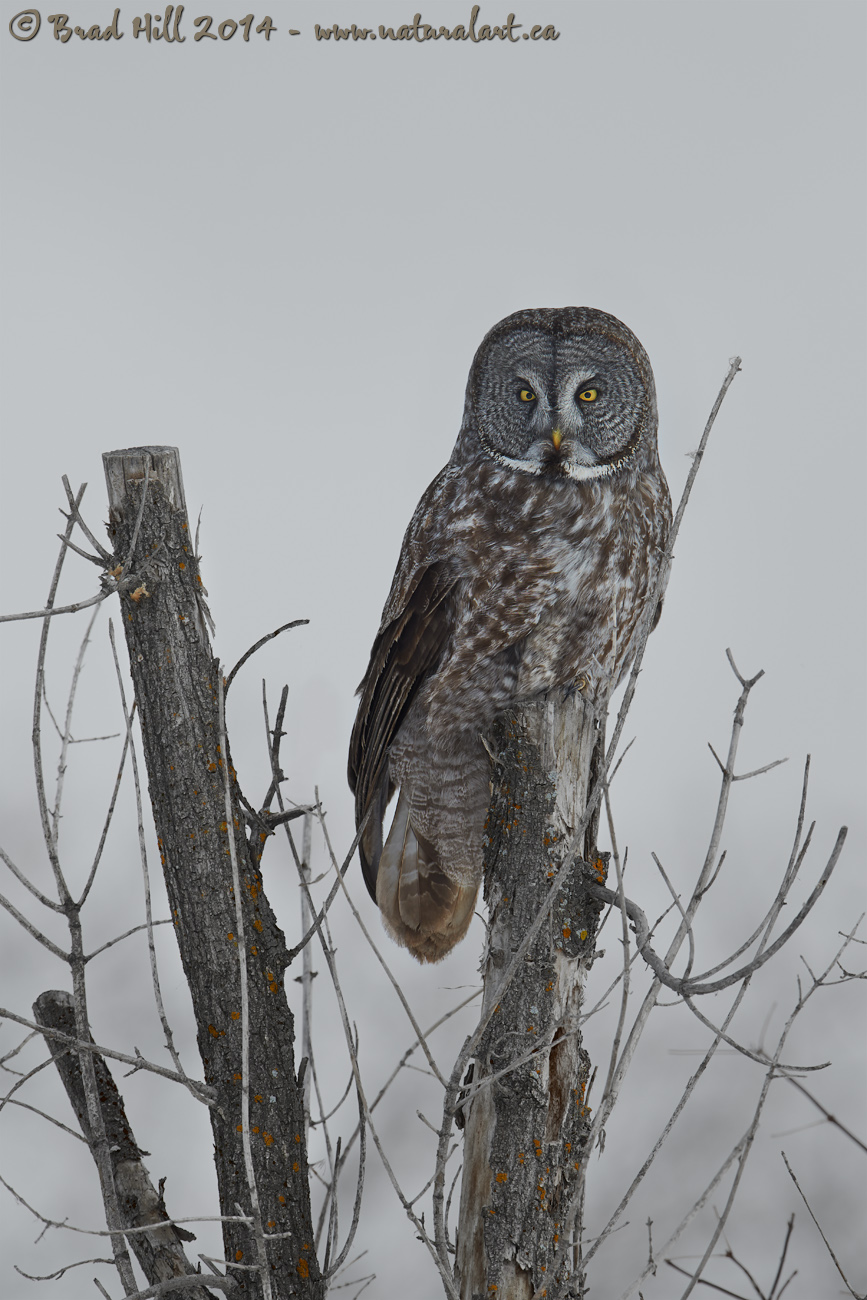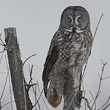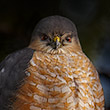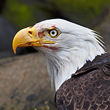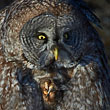Availability: Undetermined - Enquiries?
In the Field
Great Gray on Gray. Interlake Region, Manitoba, Canada. March 5, 2014.
Great Gray Owls are year-round residents of the world's northern boreal forests. Winter in the boreal forest can be cold, long, and in many areas, very, very gray. The region this image was captured in - the Interlake region of Manitoba, Canada - is no exception to this rule! To me it's almost paradoxical how a flat-gray winter scene comes completely to life when an animal of subdued, muted and largely gray coloration enters it! And it's nothing short of amazing how all those subdued colors and tones make those piercing yellow eyes just pop!
In my field tests of the D4 and D800/800e I made no secret of the fact that my favorite "go to" camera of the time for wildlife shooting was the D4. However, when the conditions are just right and you have time to properly set up the D800e (including getting it on a tripod and shooting at low ISO's) it can be a fantastic tool for capturing high resolution images of wildlife. This shot - which is full frame - is an example of a situation where I pull out the D800e: the bird was calm and very still, I had time to hook my camera to my 600mm lens and get the whole set up planted firmly on a stout tripod, and I had the light to shoot at a low ISO (140 in this case). The result is a nuanced shot that I can print absolutely HUGE! ;-)
This is a shot that must be seen large to be appreciated, so here's a higher resolution shot (2400 pixel) shot for your perusal:
• Great Gray on Gray: Download 2400 pixel image (JPEG: 1.2 MB)
NOTES:
1: This image - in all resolutions - is protected by copyright. I'm fine with personal uses of it (including use as desktop backgrounds or screensavers on your own computer), but unauthorized commercial use of the image is prohibited by law. Thanks in advance for respecting my copyright!
2. Like all wildlife images on this website, the subject is fully wild and completely unconstrained. Besides the potential impact of my presence, nothing has been done to intentionally alter or affect the ongoing behavior of the subject and, of course, there has been no use of any form of bait or other form of wildlife attractants (including vocalizations).
3. This image was captured during my "Owls of Manitoba" photo tour in early March of 2014. For details about all the photo tours I'm currently offering just check out my Photo Tours page.
4. This version of the image is NOT "as seen". This image clearly crosses the line from simple digital correction to digital manipulation in two ways. First, much of the image has been strongly desaturated in colour. Second, a few branches which extended from the snags and above the head of the owl were removed and/or shortened (they did not contact the subject).
It is my policy to clearly identify ANY images on this website that overstep the bounds of digital correction and enter the territory of digital manipulation (see Voice: Commentary: Digital Correction vs. Digital Manipulation).
Behind the Camera
Great Gray on Gray. Interlake Region, Manitoba, Canada. March 5, 2014.
Digital Capture; Compressed RAW (NEF) 14-bit format; ISO 140.
Nikon D800e paired with Nikkor AF-S 600mm f4 VR lens supported on Gitzo 1348 tripod with AcraTech Long Lens head. VR on and in normal mode.
1/640s @ f6.3; +0.33 stop compensation from "recommended" matrix-metered exposure setting.
At the Computer
Great Gray on Gray. Interlake Region, Manitoba, Canada. March 5, 2014.
RAW Conversion to 16-bit TIFF, including first-pass/capture sharpening using Capture One Pro version 7. Three raw variants (different versions of a single raw capture) processed, differing by a total of 0.7 stops in exposure.
Further digital corrections on resulting 16-bit TIFF files using Adobe's Photoshop CC and Light Crafts Lightzone. Photoshop adjustments included compositing (blending) of the three output files from the raw converter, further slight exposure adjustments, selective desaturation of colors, and selective sharpening for web output. Note that a few "stray" branches that extended above the owl's head were removed during post-processing from this version of the image. Final minor selective tone-tweaks performed using tone-mapping tools of Lightzone.
Conservation
Great Gray on Gray. Interlake Region, Manitoba, Canada. March 5, 2014.
Species Status in Canada*: Not at risk.
The Great Gray Owl (Strix nebulosa) is North America's largest (but not heaviest) owl. This rodent-eating specialist and resident of northern boreal foress shows a moderately strong preference for areas nears bogs and especially along forest edges. It is the only member of its genus to breed in both the old and new worlds.
While the Great Gray Owl is not considered to be at risk in Canada, timber harvest - and the subsequent removal of large diameter trees typically used for nesting, roosting, and hunting - can have great impact on their populations. In Manitoba (where this Great Gray was photographed) their preferred habitat may be threatened by forestry, peat extraction, and agriculture.
*as determined by COSEWIC: The Committee on the Status of Endangered Wildlife in Canada













